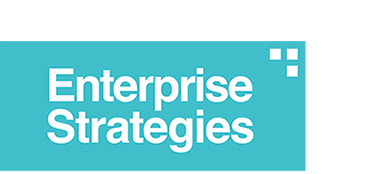
12 Feb Why No One Is Logging On To Your Enterprise Social Network
One of the biggest buzzwords in social business today is adoption. Executives and employees may be willing to try a new tool or platform once, but many businesses are struggling to retain those users and ensure ongoing engagement.
If you or your team are having trouble growing adoption of your enterprise social network, it’s likely because of one (or more) of these reasons:
Wrong Platform
Every business has different needs, so it is important that companies select social business tools that are the best fit for their culture, style of business, and future expansion plans. Choose and implement the wrong platform, and it will become a very expensive loss because of underutilization. If employees find that the tool doesn’t complement or enhance their everyday responsibilities, they will quickly stop using it.
Bottom Line: Perform a thorough requirements gathering process with employees and teams before conducting any vendor selection.
No Easy Access
Employees do not have time to waste trying to track down links to platforms, or remembering numerous usernames and passwords. If your enterprise social network is not easy to access, such as on your intranet homepage or automatically loading when computers are turned on, employees will likely get frustrated or forgot to access the tools altogether. To make sure employees log on to enterprise social networks, it’s important to make them intuitive to find and easy to access.
Bottom Line: Make sure employees can quickly and easily find social tools by placing them in heavily traffic areas, and consider pre-installing them on computers and laptops.
Lack Of Training
Usage of enterprise social networks is directly connected to how comfortable employees feel with the tool. Most companies mistakenly assume the majority of employees are familiar with some type of social media because of the popularity of Facebook, Twitter, and LinkedIn. Though it may initially seem basic and time consuming, it’s critical to provide training in different formats to educate employees on how to use any new tools or platforms. Since everyone learns best in different ways, trainings should vary too–offer one-on-one, online webinars, and on-demand videos.
Bottom Line: Make sure that any new enterprise social tool is launched with detailed training available, both in-person and online.
Not Enough Promotion
To test enterprise social networks, some companies prefer to do a soft launch with no large-scale promotion. This is an excellent way to get initial interest and a foundation in the company, but make sure your company plans a larger, official launch with strategic communications. It’s important that the opportunities and benefits of an enterprise social network are marketed and shared in as many mediums as possible so all employees are reached. Furthermore, part of successful marketing of an enterprise social network, is showing (not just telling) real examples of how enterprise social networks will help employees.
Bottom Line: Be sure to create a comprehensive marketing strategy, and ongoing campaigns, to raise awareness and therefore usage of tools by employees.
Low Activity
If employees are not using your enterprise social network, there is likely little content or activity encouraging them to return regularly. It’s a dangerous cycle–content drives users, but users create content. When employees are not going to your internal social network, no real business activity is being conducted there and, as a result, new and existing users don’t have compelling a reason to log back in. What we’ve found motivates usage of an enterprise social network most is getting work accomplished with less time, less effort, and less energy for employees.
Bottom Line: Be sure to create a comprehensive marketing strategy, and ongoing campaigns, to raise awareness and therefore usage of tools by employees.
In all honesty, it is almost impossible to get every employee in a business using an enterprise social network. However, by being aware of the core reasons why users are discouraged from using social tools, you can actively plan to prevent these issues and ultimately maximize value from internal social networks.

